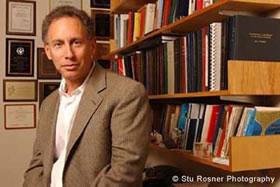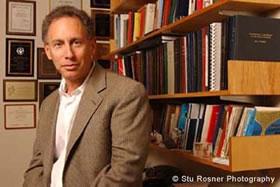Robert Langer: The Thomas Edison of Biomedical Engineering
October 14, 2014

Thomas Edison holds the record as the American with the largest number of US patents, totaling 1,093. Edison's inventions include the phonograph and the incandescent light bulb, products that revolutionized life in the 20th century. With more than 1,060 patents, biomedical engineer and MIT professor Robert Langer is rapidly closing in on that number -- although, as Langer modestly points out, only about 680 are US patents; the rest are international. Counting international patents brings Edison's total to 2,332, a number that might be difficult for Langer to beat. However you count them, Langer's inventions may have an impact on life in our century that rivals Edison's impact on the last century.
My daughter Adelyn and I recently attended a lecture given by Langer at the Illinois Institute of Technology (IIT), my alma mater. Adelyn is studying biomedical engineering there. For me, besides being a family bonding time, it was a great opportunity to hear from one of the pioneers of my daughter's field. Like Edison, Tesla, and other famous inventors, Langer's story is one that should be inspiring to engineers in any field.

Langer graduated from MIT with a doctorate in chemical engineering in 1974. This was during the oil crisis, when many people in the US had to wait two hours or more in lines for rationed gasoline. Chemical engineers were in high demand. Langer says he received 20 job offers, four from Exxon alone. At one job interview at a refinery in Baton Rouge, Louisiana, the person interviewing Langer said that if someone could increase the yield of a certain chemical reaction by just 0.1%, it would be worth billions of dollars. Returning home to Cambridge after that interview, Langer realized that wasn't what he wanted to spend his career doing. He wanted to do something that would help people.
While at MIT, Langer had developed a math and science curriculum for inner-city children in Cambridge. He found that the City College of New York was looking for someone to do just that, so he applied. Unfortunately, he never heard back from them. Undaunted, he applied for similar jobs across the country, but never heard back from any of them, either.
Since no one in the world of education seemed to be looking for a chemical engineer, he decided to apply to hospitals and medical schools. Again, he got no response. Then a colleague suggested that he contact Judah Folkman at Boston Children's Hospital, who had a reputation for "hiring unusual people." Folkman saw Langer's potential and offered him a job.
Folkman was working on a new type of cancer therapy, one that most people in cancer research thought was completely off-the-wall and unworkable. A tumor starts as a single cell. The cancer cell divides, eventually forming a ball of about a million cells. Once the tumor grows to this size, the cells on the inside of the ball can no longer nourish themselves. The tumor can't continue to grow unless it can feed these cells. It does this by sending chemical signals that trick your body into growing blood vessels into the tumor, a process called angiogenesis. Folkman's idea was to find a way to stop this process so that tumors can't grow.
Langer was put to work trying to find a chemical that could stop angiogenesis. Since blood vessels don't grow into cartilage, he and Folkman thought that cartilage might contain such a chemical. In order to get enough cartilage, Langer worked with a local slaughterhouse, which delivered thousands of cow bones per week to his lab. He separated the cartilage from these bones, and extracted thousands of chemical constituents from it.
About the Author(s)
You May Also Like



